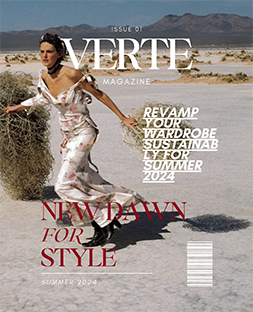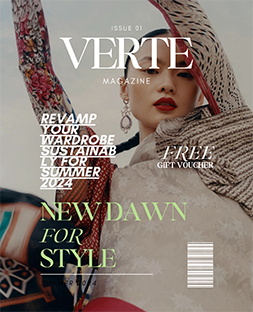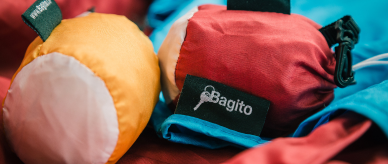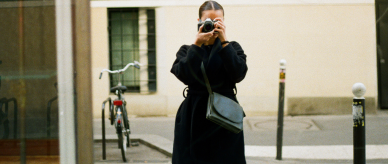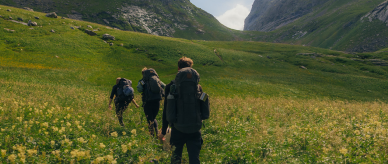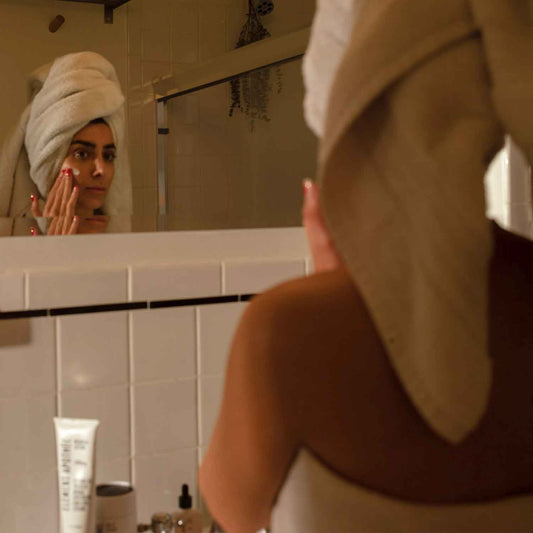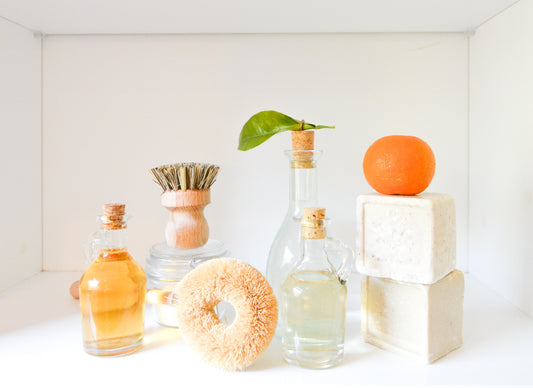So, you're wondering if it's more sustainable to go for real leather that can last over 15+ years with good care, or vegan leather that might only hold up for around 5 years. My take? Second-hand leather wins the sustainability game hands down.
As for whether leather can be ethical and eco-friendly, it's a hotly debated topic that's been going on forever. Hardcore vegans might say no, but ethical vegans like me see the value in reusing and recycling, especially when it comes to upcycled leather. It often comes from older animals that died naturally or from leftovers of the meat industry. Sometimes, it's even made from vintage or repurposed to avoid filling up landfills. That means we're using materials longer and reducing waste.

Ultimately, it's up to you to decide what matters most when you're picking out your stuff. But remember, it's not just about the materials. Brands should be looking at everything from greenhouse gases to chemical use and labor rights. Starting with more sustainable materials is a good step, but it's just one piece of the puzzle.
The leather industry has some serious sustainability issues, from factory farming to massive carbon footprints. Is all that worth it for a pair of shoes? If not, there are tons of great alternatives out there like Piñatex, Mirum, Mylo, Apple Skin, Desserto, MuSkin, and Cork.
Now, here's the issue about those alternatives: Many still use plastics or fossil-fuel-derived materials to make them durable. These might give the material water-resistance or a slick finish, but they also mean there's a risk of microplastics ending up in our environment. And even if they use bio-based plastics, they're not necessarily biodegradable—they're just made from biological resources instead of oil.
Where does Upcycled Leather come from?
Upcycled leather can originate from several sources:
- Naturally Deceased Animals: One source of upcycled leather is animals that have died naturally. These animals are not slaughtered for their hides but rather pass away due to natural causes, making their hides available for reuse.
- Meat Industry By-products: Another common source is the meat industry, where hides are typically considered waste after processing. Rather than discarding these hides, they can be repurposed into upcycled leather products, extending their lifecycle and reducing waste.
- Vintage or Repurposed Leather: Additionally, upcycled leather can come from vintage items or existing leather goods that are repurposed for continued use. This approach not only prevents these items from ending up in landfills but also taps into the durability and quality inherent in leather.
Upcycled Leather Vs Vegan Leather
In principle, using leather alternatives appears to be the obvious solution. But pleather or faux leather has a dark side too. It’s made from pollutants like polyurethane (PU), a fossil fuel, and polyvinyl chloride (PVC), vinyl or plastic. So for many of us, it comes down to it being the lesser of two evils – but of course, things are never really that simple.
Upcycling transforms discarded leather into new, creative items, preserving the material's durability while significantly reducing waste. This process not only aligns with sustainable practices but also merges luxury with environmental consciousness. Luxury brands like Miu Miu and Stella McCartney have embraced upcycled leather, integrating it into their collections and showcasing its potential to redefine fashion's environmental impact.
Upcycled leather isn't just about repurposing scraps; it's about redefining how we view and use materials. What was once destined for landfills now becomes sought-after accessories, footwear, and even furniture. This underscores a shift towards more responsible consumerism and production methods—an intersection where style meets sustainability in elegant harmony.
Upcycled Leather vs Traditional Leather
So, why do some brands still stick with traditional leather? There's an undeniable allure to real leather that synthetic materials just can't match. Plus, recent advancements in leather production have made big strides in cutting down its environmental footprint. Technology has stepped in to boost efficiency and cut back on harmful chemicals used in processing.
But let's face it—traditional leather production comes with a hefty environmental cost. It requires a lot of resources, from additional livestock to chemicals that aren't exactly earth-friendly. And let's not forget the billions of pounds of leather scraps dumped into landfills every year, adding to greenhouse gases.
By reusing these scraps, upcycled leather slashes the need for new materials and production, making a smaller environmental footprint. Upcycled leather doesn't sacrifice quality or durability. It's every bit as luxe and long-lasting as traditional leather, ensuring your favorite handbag or jacket stays chic and functional for years to come.
Upcycled Leather vs Recycled Leather
When we talk about upcycled leather versus recycled leather, we're looking at two different methods with the same mission: cutting waste and supporting sustainability. Recycled leather takes discarded pieces, shreds them, and binds them with adhesive to form new materials. On the other hand, upcycled leather reuses existing leather scraps without fully breaking them down. Both techniques play a crucial role in making fashion more sustainable by offering distinctive and valuable products while reducing environmental harm.
The Role of Technology in Upcycling
Technology is playing a pivotal role in revolutionizing the process of upcycling leather, offering innovative solutions that enhance both efficiency and creativity.
Laser Cutting
Unlike traditional cutting methods that can be slow and imprecise, laser cutting offers a non-contact, high-speed approach that maintains the integrity of the leather surface. It allows for intricate patterns and designs to be cut with unparalleled precision, enhancing both the aesthetic appeal and functionality of upcycled leather products.
The process involves using a laser beam to cut through the leather without damaging it, ensuring clean edges and minimal waste. This technology has revolutionized the industry by overcoming the limitations of manual and electric cutting methods, which often struggle with intricate patterns and slow production speeds. By harnessing laser cutting technology, designers can transform leather scraps into high-quality goods efficiently and sustainably.
3D Printing
Another groundbreaking technology making waves in leather upcycling is 3D printing. This additive manufacturing process enables the creation of complex three-dimensional designs that would be challenging to achieve through traditional means. By using 3D-printed molds, designers can mold and shape upcycled leather into unique textures and structures, adding value and originality to their creations. 3D printing offers flexibility in design and production, allowing for customization and experimentation with different materials and textures. It reduces material waste by precisely controlling the amount of material used and enables designers to achieve intricate details that enhance the aesthetic and functional properties of upcycled leather products.
Challenges and Opportunities
Despite the undeniable benefits of technology in upcycling leather, challenges remain. Scaling production while maintaining quality and consistency can be a hurdle for many upcycling businesses. Moreover, the initial investment in advanced technologies like laser cutting and 3D printing can be prohibitive for smaller enterprises, limiting their adoption and growth.
However, these challenges present opportunities for collaboration and innovation within the fashion industry. By fostering partnerships between technology providers, designers, and manufacturers, we can overcome barriers to sustainable fashion and accelerate the adoption of upcycled leather as a mainstream choice for consumers.
Benefits of Upcycled Leather for Shoppers
Shopping with Confidence: Opting for upcycled leather goods empowers you to make sustainable fashion choices that shrink their environmental footprint. By selecting items crafted from discarded materials, shoppers actively contribute to waste reduction in the fashion industry.
Innovative Variety and Stylish Adaptations: Upcycled leather opens doors for the fashion world to innovate and create a wide array of distinctive styles. Unlike mass-produced items, upcycled leather products often showcase unique characteristics that reflect their origins and history. This diversity not only caters to individual preferences but also fosters a dynamic and sustainable fashion market.
Timeless Appeal of Leather: Leather has always been admired for its durability, sophistication, and timeless allure. Through upcycling and repurposing, these qualities are reinvented in new forms, offering consumers sustainable alternatives that uphold both quality and style.
Supporting a Circular Economy: Upcycled leather plays a pivotal role in promoting a circular economy within the fashion sector. By prolonging the lifespan of existing materials, upcycling reduces the demand for new resources and minimizes waste generation. This sustainable approach encourages a closed-loop system where materials are continuously reused and repurposed.
So, the next time you're shopping for a new addition to your wardrobe or home decor, think about shopping for second-hand or upcycled leather.
Join the movement towards a more conscious, compassionate, and stylish future—one where sustainability is woven into every thread of our choices. Explore Verte Mode for beautiful, high-quality upcycled bags and accessories.

